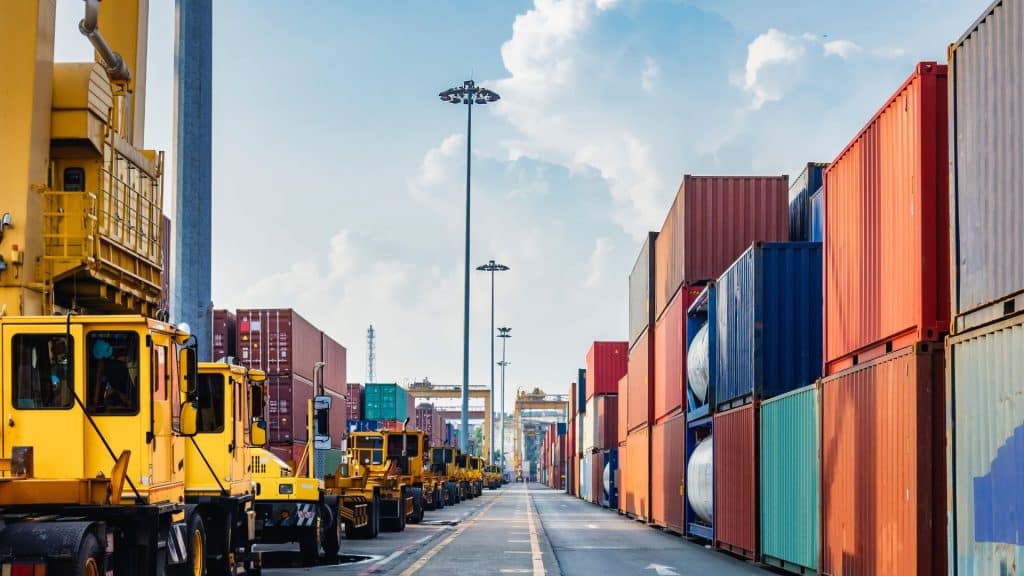DHL CUTS TIES WITH CARGO AIRLINES AS EFFICIENCY INITIATIVE RAMPS UP
DHL’s recent cancellation of transport partnerships with third-party airlines supporting its courier and freight forwarding networks is part of a new cost improvement campaign that helped the Express division achieve first-quarter operating profit despite lower shipment volume and rising trade volatility. DHL Express’ operating profit increased 4.8% year over year to $754 million as efficiency measures ramped up, while better pricing and product mix boosted revenue 2%, according to DHL Group financial results released Wednesday. Management said improved capacity utilization, seasonal network adjustments and higher yields countered the drop in volume. Demand for time-definite international parcels, the Express division’s core product, fell 7.1% to 975,000 items per day, while aviation supply costs for DHL’s own fleet and purchased transportation declined 7% year over year. Operating costs at Express air hubs decreased 1%. The spread of tariffs hasn’t materially impacted finances so far, but forced the company to make significant operational changes. Management said it expects more demand and rate volatility going forward. Tariffs are double-edged for DHL: They can suppress consumer demand because of higher prices, but they also generate business from customers looking for ways to minimize their total landed import costs, including rerouting shipments and extra customs handling.
WEST COAST POLITICIANS, PORT EXECUTIVES PROTEST ‘RECKLESS’ TARIFFS
A coalition of West Coast politicians and ports are warning that the Trump administration’s tariffs are precipitating significant supply chain disruptions that will have far-reaching consequences for both regional and national economies. The officials from Washington, Oregon and California in a virtual press conference Thursday said that the window to minimize economic damage is rapidly closing, with small businesses already facing dire consequences comparable to those experienced during the COVID-19 pandemic. According to Sen. Patty Murray, D-Wash., the Trump administration inherited a “remarkably strong and resilient American economy” but is now “single-handedly pushing this nation towards a painful Republican recession while forcing a tax increase on everyone.” The economic forecast appears increasingly grim. The Port of Los Angeles has publicly projected imports to drop by approximately 35% within two weeks if the current tariff situation remains unchanged, with the Port of Long Beach making similar predictions.

SHIPPING’S MISSION IMPOSSIBLE? BOOST RATES AS CHINA EXPORTS PLUNGE
Global shipping continues to struggle to balance the shocks rippling out from the U.S.-China trade war, and recent data reveals contrasting trends in spot shipping rates from the Far East to the United States and European markets. Average spot rates from the Far East to the U.S. West Coast have remained stable at $2,790 per forty-foot equivalent unit since mid-April, according to analyst Xeneta. Similarly, rates to the U.S. East Coast have held steady at $3,830 per FEU over the same period. This stability follows significant declines earlier in the year. Rates to North Europe have experienced a more pronounced decline, with average spot rates falling 8% on May 1 to $2,130 per FEU. This marks the lowest level since December 2023. Meanwhile, rates from the Far East to the Mediterranean saw a smaller decrease of 1.6%, settling at $3,155 per FEU. Sand elaborates on the challenges of rapidly adjusting trade patterns: “You cannot just decide from one day to the next that all the goods you were going to send to the U.S. will now be sent to Europe and easily find customers for it. ”Xeneta’s findings suggest that stakeholders should prepare for potential continued volatility, particularly if U.S. consumer demand weakens in the coming months. The shipping industry remains in a state of adjustment following multiple global disruptions, with carriers actively deploying strategies to maintain rate levels against changing trade patterns and economic conditions.
HAPAG-LLOYD PROFITS UP IN Q1, UNCERTAINTY AHEAD
Hapag-Lloyd said that both volumes and freight rates were up 9% in the first quarter of 2025 compared to the same three-month period in the previous year. The line transported 3 million teu with an average freight rate of $1,480 per teu in the first quarter of 2025.As a result of these improvements the Hamburg-headquartered container line reported an EBITDA of $1.1 billion for Q1 of 2025 up 17% on the same period a year earlier, while EBIT stood at $500 million for the first quarter of this year, a 24% improvement on last year. The wide range of the forecast reflects an uncertain environment with volatile freight rates and geopolitical tensions. “Both the ongoing tense situation in the Red Sea and the global trade conflict could have a significant impact on supply and demand in container shipping and thus also on Hapag-Lloyd’s earnings performance,” the company said